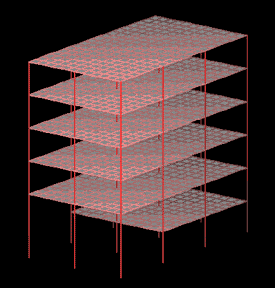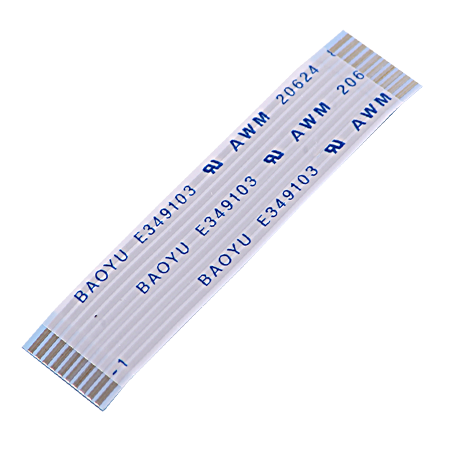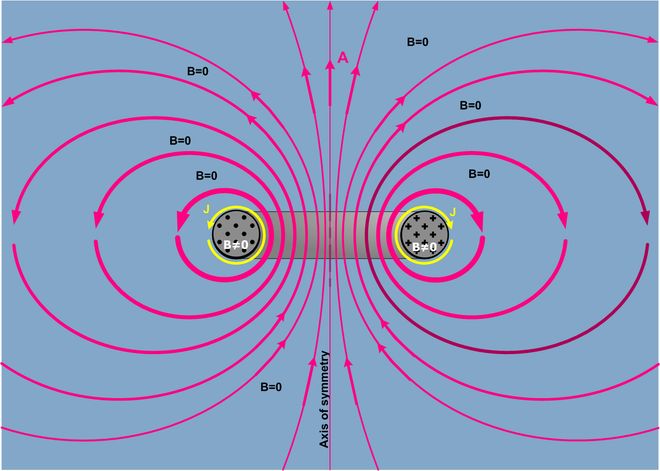HOME
What is Wrong with CDs
and Why Do They Sound So Horrible?

Copyright Geoff Kait,
MACHINA DYNAMICA, May 2014
Have you ever asked yourself why CDs often sound thin, undynamic, threadbare, hollow, tinny, bass shy, whimpy, rolled off, jangly, radio like, congealed, generic, uninspiring, airless and discombobulated? Here we look at some fundamental problems inherent with CD playback that might help explain why CDs frequently sound pretty awful.
1. Many CDs are out of round. For that reason they wobble and flop around inside the transport during play, making accurate laser reading of the data difficult since the tracking servo mechanism must work overtime. Thus, the Audio Desk Systeme Sound Improver was born.
2. The chemical, Mold Release Compound most likely, who knows, that is absorbed into the surface of the polycarbonate layer of the CD somewhere along the line must be removed as it interferes with the laser reading the data. The issue is the transparency of the polycarbonate layer which, in fact, is not perfectly transparent to begin with. Polycarbonate, selected because it has the correct refractive index for CD laser geometry to work, is approximately 92% transparent to the CD laser, best case scenario.
3. The CD transport must be absolutely level for the best sound, otherwise the spinning CD tends to flop around in there, especially if it is out of round, making the laser reading much more difficult. Coming Soon!! Why Reed Solomon Error Correction codes do not correct all errors. The level of the top of the CD player chassis may or may not be the same level as the actual transport so it is best to obtain level directly on the CD spindle with a small bubble level.
4. There are many sources of vibration that interfere directly with the audio signal in the wires and electronic devices (capacitors, etc.) inside the CD player or affect the spinning CD. The primary culprits are seismic vibration, mechanical feedback from the speakers, the CD transport motor and the transformer. See Figure 1 for an animation of how seismic forces produce vibration of the building in many directions of motion, actually in all 6 DIRECTIONS. Some percentage of structural vibration will make it past the low pass filter of the best isolation systems not to mention capacitors themselves vibrate just a smidgen. I will throw in airborne vibration (acoustic waves) just to make everyone happy.

Figure 1. Seismic vibration producing motion of building structure
in multiple directions, including twisting.
5. Scattered background laser light fills up the inside of the CD transport compartment while the CD is playing and interferes with the laser reading of the data by entering the photodetector as noise. One assumes the designers of the Compact Disc were trying to slip one past the goalie. The photodetector is rather dumb and accepts any signal greater than 70% of the full reflected signal. For this reason coloring various areas of the CD produces much better optical signal to noise ratio (SNR). The CD can be colored not only around the outer and inner edges but also on the innocuous looking 1/8 inch wide blank band on the shiny data side. Some colors like CYAN or GREEN deal with the visible portion of the laser light that is red (circa 650-700 nm). Cyan is the complementary color of red, thus absorbs red. But for the colors purple and orange there is no such connection to the laser light. CD laser is actually (centered) in the near infrared (NIR) portion of the spectrum at 780 nm. Diagram 1 illustrates the color spectrum and the infrared spectrum.

Diagram 1 - Electromagnetic Spectrum Showing Visible and Invisible Portions, Including Near Infrared (NIR).
6. The invisible portion of the scattered background laser light also interferes with the laser reading of the data. But this is not so easy to deal with because there are no (visible) colors that can be used to absorb the near infrared light. Diagram 1 shows that visible light stops around 700 nm. So, we must resort to more, uh, stringent means. Enter DARK MATTER, Machina Dynamicas spray bottle for the label side of the CD, an infrared light absorber that prevents scattered invisible laser light from getting into the photodetector.

Figure 2. Infrared photograph of palm trees
7. There are no standards for polarity so the odds are quite good the CD you are listening to right now is out of absolute polarity.
8. The CD player shoots itself in the foot by radiating RF from all of the semiconductor chips and radiating a magnetic field from the transformer, thus distorting the signal (electromagnetic wave) carrying devices and wires inside the player and adding noise. Wrapping mu metal around the transformer and placing little tiny 3M AB5100S RFI/EMI absorbing square graduation caps on top of all semiconductor chips go a long way to alleviate these problems. Of particular interest, in terms of sensitivity to all manner of magnetic fields, RFI and vibration, are those innocuous looking and ubiquitous little flat ribbon cables, the ones with 10 or so tiny wires laid out side by side, that connect one circuit board to another.
 ...............
...............

The big mystery for the case of mu metal reducing the magnetic field in the presence of wires, electron tubes, capacitors, etc. is that theoretically magnetic fields cannot influence photons (the ones that comprise the electromagnetic wave that is the audio signal) which, as discussed in the last paragraph below, have ZERO MASS and cannot be magnetized. The reason electromagnetic waves in wires travel at velocities approaching the speed of light is that the wave is comprised of PHOTONS. And the reason electromagnetic waves travel exactly at the SPEED OF LIGHT in a vacuum is that the wave is comprised of photons. If the electromagnetic waves were not comprised of photons but something else, like ELECTRONS - with MASS - they could not travel at the speed of light, they are forbidden by Lorentz and Einstein. Only MASSLESS Particles like PHOTONS can travel at the speed of light. Hel-loo!
9. For the best sound the CD should be demagnetized and ionized periodically. However, having said that, there are some big problems with the explanations floating out there regarding how an electric static charge or magnetic field happen to wind up there in the first place and what harm they might be for the sound. The primary problem with those explanations is that the CD laser is LIGHT, part of the electromagnetic spectrum, mostly in the invisible infrared portion of the spectrum in the vicinity of 780 nm. But light is comprised of PHOTONS and photons have ZERO MASS so they cannot be magnetized and they cannot be influenced by magnets or magnetic fields. So even if the CD were magnetic it is difficult to see how that magnetism could affect the laser or, for that matter, any wires associated with the entire laser reading process since the wires carry electromagnetic waves that are made up of, you guessed it, PHOTONS. The other problem is the assumption that trace elements of ferrous elements in the ink on the label and/or the metal layer can become magnetized. However, it seems very doubtful that those trace elements are sufficient in mass to produce a magnetic field of any consequence. A magnetic field produced thusly on the CD would undoubtedly pale in comparison to the magnetic field generated by a toroidal transformer, even when the field is measured at some distance from the transformer. A magnetic field of any consequence on the CD seems highly unlikely given the very low mass of the ink and the very low mass of the metal layer that is so thin sometimes it is transparent and the VANISHINGLY LOW PERCENTAGE of ferrous material that might be found therein.

Magnetic Lines of Flux (B) for a Toroidal Transformer (Cross Section)
Light can be bent by gravity but that is a relativistic effect due to the influence of very heavy mass on the fabric of spacetime, as in gravitational lensing and NOT due to the attraction or repulsion of light by mass or magnetism. Furthermore, photons have zero charge so cannot be influenced by electric fields or electric static charges, positive or negative. Also, assuming for a moment the static charge on the CD is POSITIVE, hosing the CD down with NEGATIVE ions would probably not NEUTRALIZE the static charge but rather produce a net NEGATIVE static charge on the CD. Would a negative static charge be GOOD for the sound? Maybe. And if the charge on the CD is NEGATIVE to begin with, hosing down the CD with NEGATIVE ions would simply increase the strength of the NEGATIVE static charge, no? The electric static charge builds up on the surface of the CD due to friction of air molecules on the rapidly spinning plastic disc. Thus, after you treat a CD with an ionizer and neutralize the static charge, the static charge would build up rather rapidly once the treated CD is put back in the player and played for say 60 seconds, no?

10. Last but not least, for those of you with CD players that have large transformers inside you have some big problems. Not only is the magnetic field of the transformer interfering with everything inside the player but the mechanical resonance of the transformer wrecks havoc on all of the circuit boards and all of the electrical elements contained on them. The situation is exacerbated by the fact that the transformer is DIRECT COUPLED to the chassis with a big bolt and the circuit boards are DIRECT COUPLED to the chassis with screws. The mu metal solution for the magnetic field of the transformer has been discussed already; the solution to the transformer resonance problem is to place a 1/8 inch thick cork square underneath the transformer and to isolate all of the circuit boards using small cork squares under the corners, allowing the circuit boards to float on the cork.
________________________________________





